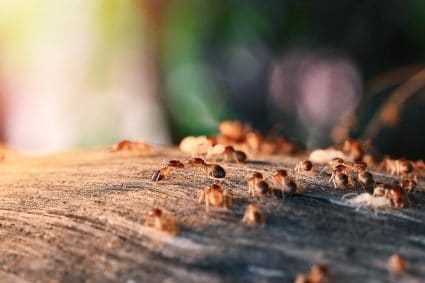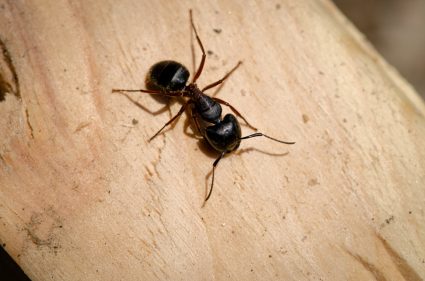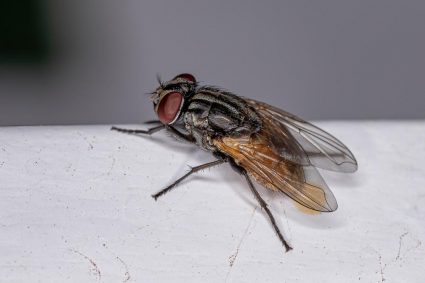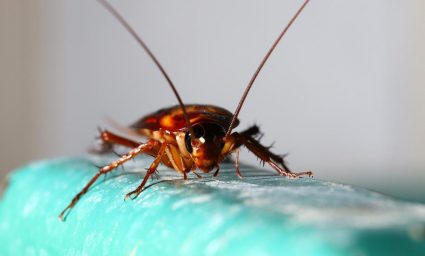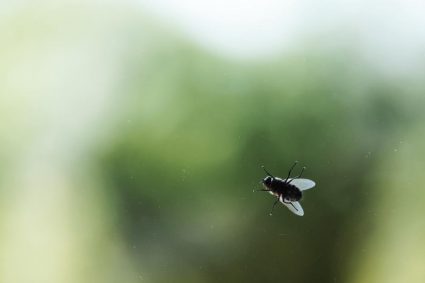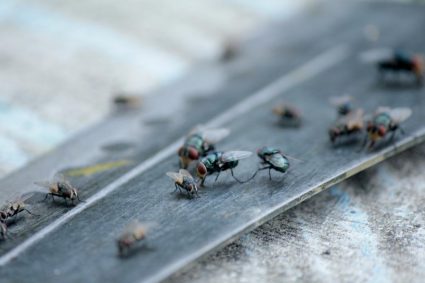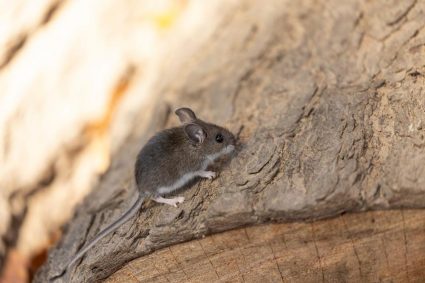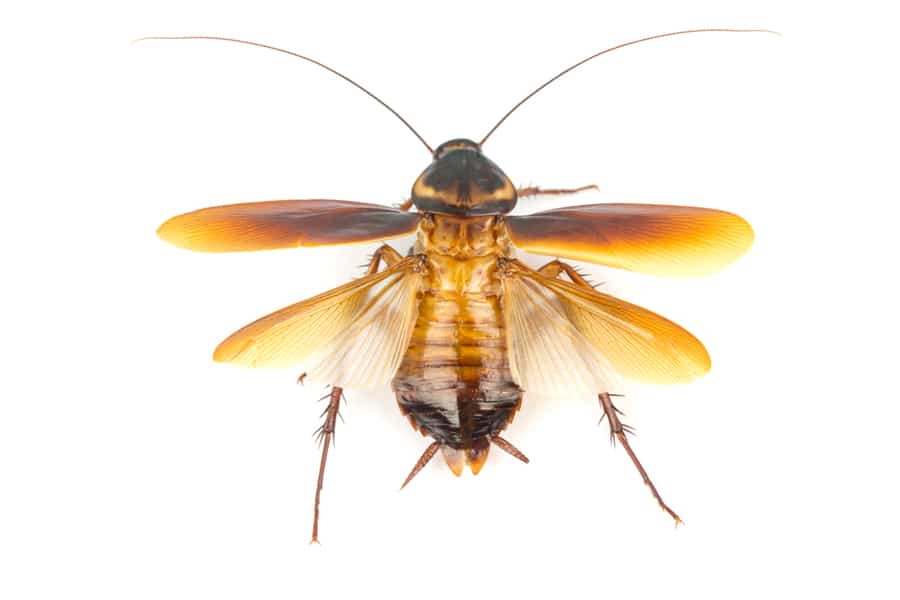
Are you dealing with a roach infestation in your home or business? Knowing which types have wings can help you determine the best path of action for getting rid of them.
Most species have wings and are capable of short flights or glidings. However, not all can fly, and factors such as size, shape, and condition of their wings can affect their ability to take to the air.
These pests can spread diseases and contaminate foods; it’s essential to eliminate their infestation as soon as possible.
The blog will briefly discuss different types of winged roaches, their potential threats, and how to get rid of them.
Not all roaches can fly; it depends on their age, development, wing size, and shape. The most common type of roaches that can fly includes American roaches, Asian roaches, Australian roaches, brown-banded roaches, and German roaches.
Roaches flying is usually more of a nuisance than a serious threat. However, most flying roaches are not harmful to humans directly but can serve the purpose of being the reason for various diseases.
The preventive measure can help keep your home free from unwanted intruders. These measures include:
- Clean your house and get rid of clutter
- Locate and fix plumbing issues
- Seal cracks and crevices on exterior walls
- Use weather strips around doors and windows
- Always keep stored food safe
The next section will briefly explain various factors that determine roaches flying capability, followed by various types of flying roaches and how to keep them out of your home.
In the end, there will be a detailed conclusion and frequently asked questions about flying roaches.
Do Roaches Fly?
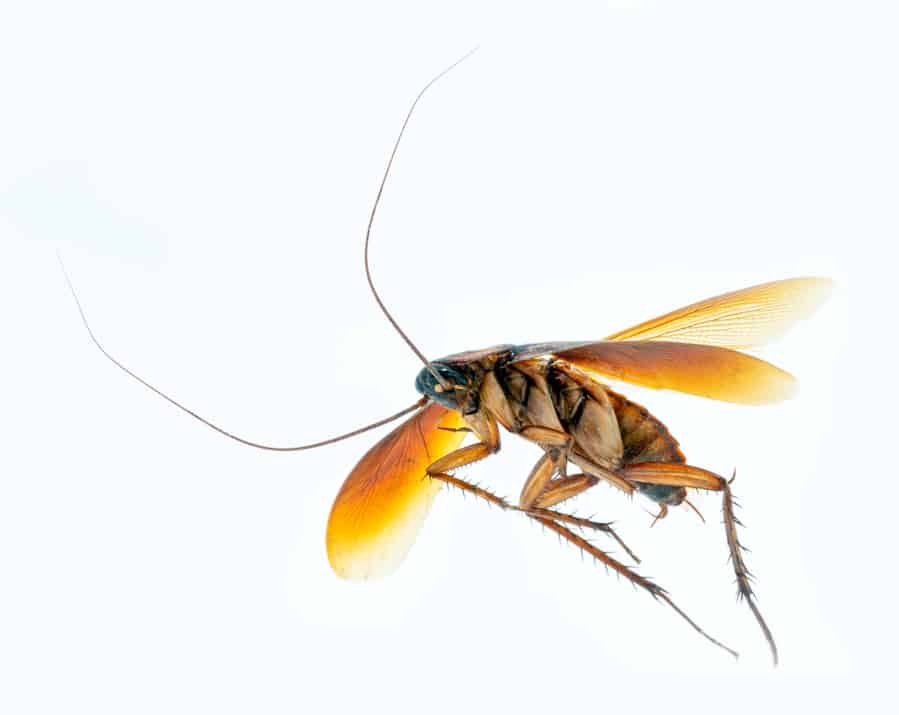
You may think roaches can always fly, but you would be surprised to know this is not the case. While the majority of species have wings, not all of them are capable of flight.
Whether or not they can take to the air depends on certain conditions, such as their wing size, shape, and temperature conditions.
What other aspects determine if a roach can glide? Science gave us the answers. Below are the most important factors in determining whether a roach can fly:
Age and Development
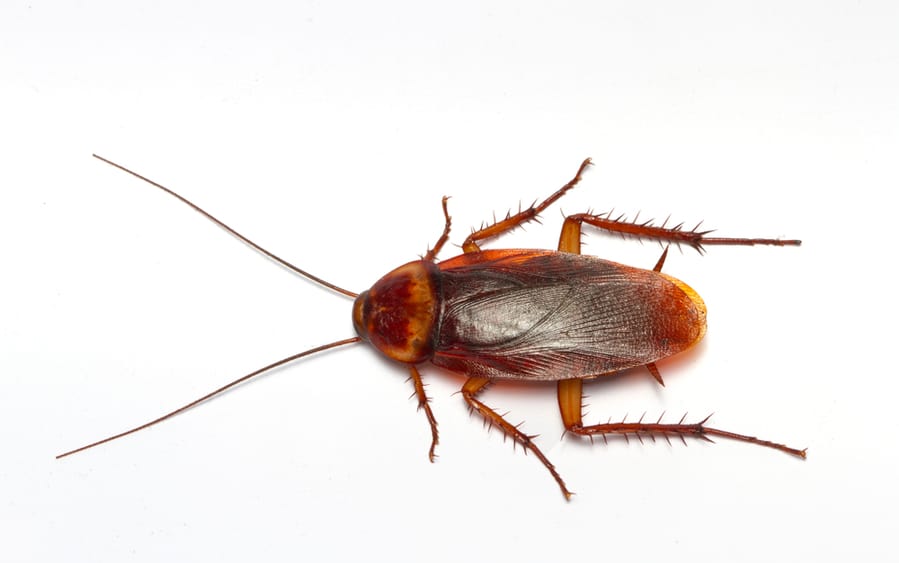
Well, it all has to do with age and development.
Younger roaches at various stages of their life may still need to develop wings to be able to fly.
It is not until they molt (shed their skin) for the final time that they extend fully functioning wings.
Size

Size is an important factor in determining whether a roach can fly.
It’s simple, more giant roaches may be too heavy to pass, while smaller species may not be able to fly for long times.
Temperature

Did you know roaches are more likely to fly when the temperatures are warmer and more humid?
These pesky insects are attracted to warm and humid conditions.
So if you live in an area with warm and humid weather, you are more likely to see roaches flying.
Roaches are very sensitive to changes in temperature and humidity.
So they use their wings to help regulate their body temperature and are likelier to fly when the weather is stable.
Food Availability
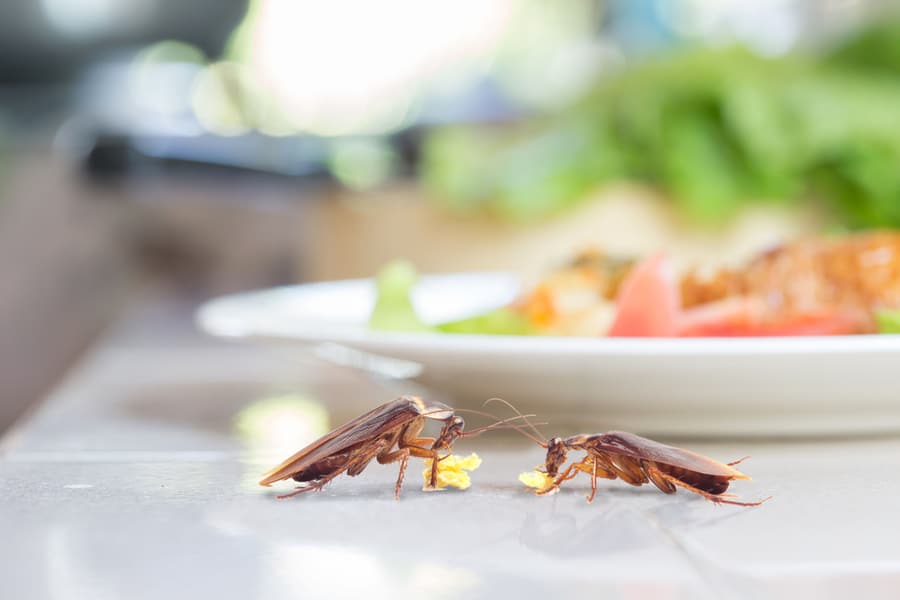
Do you ever feel you can’t get away from roaches?
No matter how cleanse you keep your home, they always will find a way to sneak in and make themselves comfortable.
These insects have a secret weapon in their quest for food; their ability to fly.
According to a study published in the journal PLOS One, the chance is more for roaches to take a flight when they search for food.
Types of Roaches That Can Fly

Roaches are of various types. Some of them are capable of flying, while others are not.
The most common types that can fly include:
American Roaches

The American roach is one of the most significant species, reaching up to three inches in length and typically reddish brown with a yellow band around its thorax.
They are resilient and commonly found in basements, crawl spaces, and sewers, and they prefer flying over running.
If you find a roaches party in your home at night, the most chance is that you are encountering American roaches because this species tends to be more active at night.
They are also omnivorous and will dine on anything from plants to meat and starchy materials.
They can be easily found in any warmer climate.
Asian Roaches
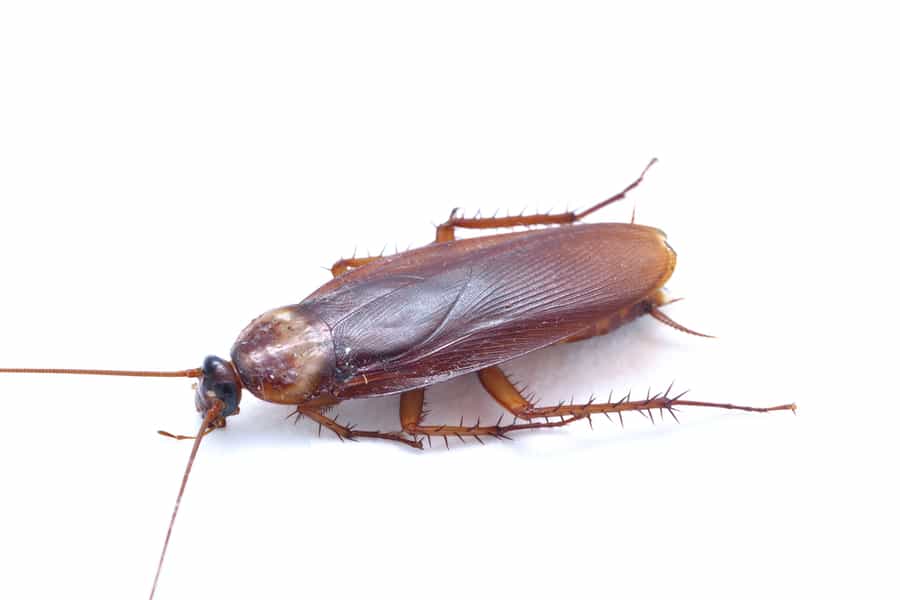
The Asian roaches may look like the most commonly known European Blatella Germanica, but they are slightly smaller and lighter in color.
They are fanatics for warmth and high humidity, often found outdoors and in damp garages during the summer.
Unfortunately, they are not only limited there; they are solid fliers and attracted to light, which makes them a considerable nuisance indoors when they decide to fly around home lights at night.
Additionally, these pests don’t only cause a disturbance, but they can also be carriers of several diseases like salmonellosis and typhoid fever.
Australian Roaches
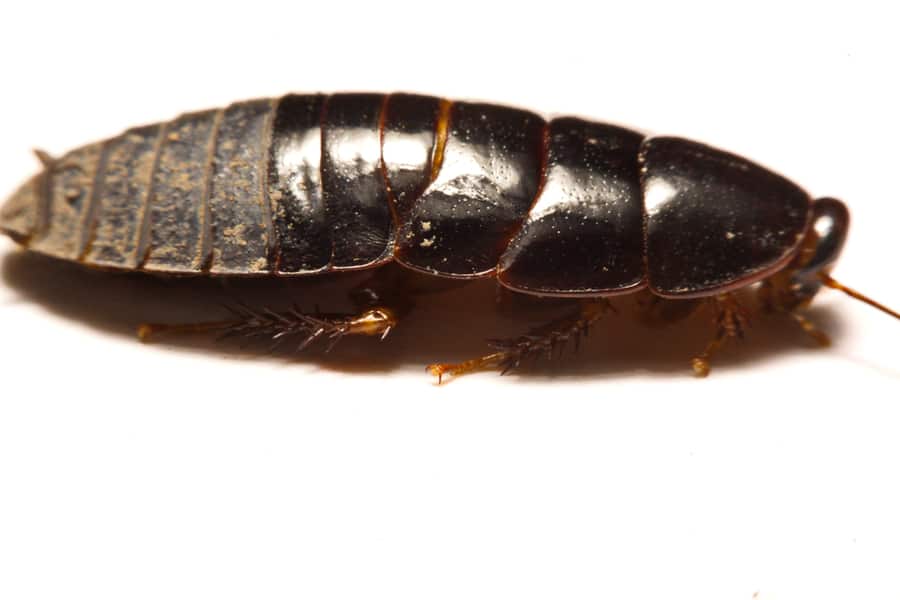
The Australian roach is an underrated but unique creature native to Australia only.
It is similar to an American insect in size and color. However, it can be distinguished by its yellow band around the thorax.
You may notice them flying around your lights as they are attracted to light.
Known for their omnivorous diet, they are harmless and relatively small compared to their American counterparts.
Brown-Banded Roaches

The brown-banded roach is a sticky surprise you want to avoid finding in your home.
This small species is well known for its two distinctive brown bands on its wings and abdomen.
They are omnivorous and can infest even the cleanest houses.
This species can fly short distances but prefer to crawl around instead.
German Roaches

Despite their tiny proportions, they can cause significant problems for homeowners.
They are about half an inch to 8 inches long, light brown, and sporting two distinctive dark stripes.
They may take short flights depending on their size, but they prefer to crawl around in search of food, and once infested, they are certainly not picky about food. They will eat whatever is available.
Unfortunately, they are one of the most common species lurking in homes, with diseases including dysentery, salmonellosis, and typhoid fever.
So keep a watch for these creepy crawlers; they may be small but can pose significant health risks.
Although roaches typically are not harmful to humans, they can cause a lot of nuisance in a household.
Roach droppings, dead bodies, and the bacteria these critters carry on their bodies are not the best house guests.
Moreover, they are attracted to our food, so it’s essential to take preventive measures.
5 Most Effective Ways To Repel Flying Roaches From Your Home
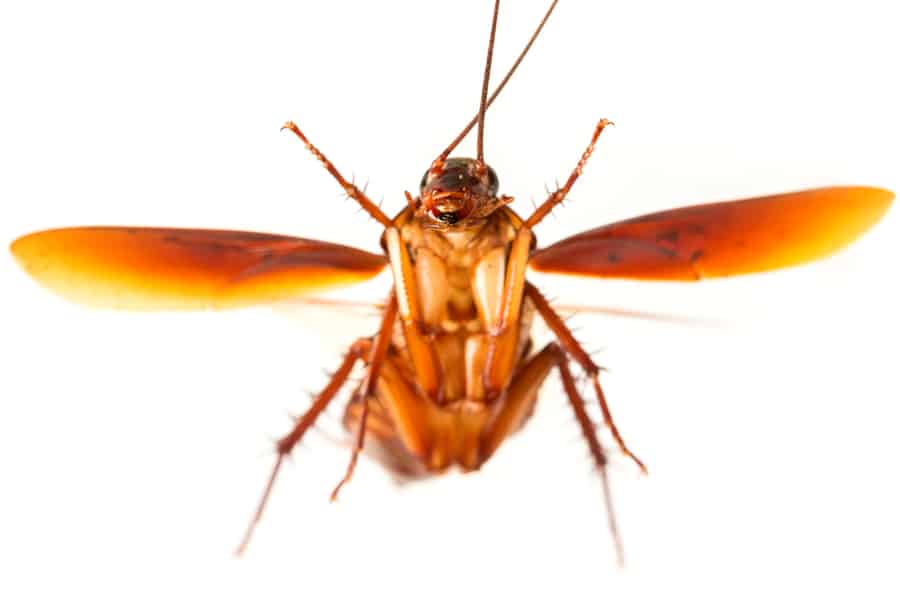
Unfortunately, roaches not only eat available foods but can also contaminate your food through packaging and could trigger allergies or asthma.
So it’s a no-brainer why keeping them out of the living space is recommended.
Below are some effective measures to ban flying roaches entry into your home:
1. Keep Your Home Clean and Clutter-Free

Keeping your home clean and clutter-free is crucial to protect yourself from a dreaded roach infestation.
In addition to immediately wiping up spills and crumbs, it’s a great idea to store food in airtight containers to avoid any scent that can cause these pesky insects into your home.
Doing this will limit the number of roaches and keep your space organized and neat.
2. Repair Any Leaks or Plumbing Problems

Owning a home is one of life’s greatest joys, but some responsibilities come with it that can be hard to keep track of, and leaky drainage is one of them.
Rinsing water from leaky pipes could not only cause costly damages but can also cause various pests, especially roaches.
So it is recommended whenever you notice any plumbing problems, you immediately find means to fix them.
3. Seal Cracks and Crevices in Your Home’s Exterior

Securing your home’s exterior might seem intimidating and costly, but this can save a lot of grief.
Sealing up cracks and crevices in the home’s exterior is critical to preventing roaches from entering your space.
Using caulk and expandable foams are cheap and effective ways to fill these gaps, thus recommended.
4. Use Weatherstrippings To Seal Gaps Around Doors and Windows

When dealing with roaches, blocking every possible entry point is crucial.
Gaps around doors and windows can be particularly troublesome due to their easy availability.
Fortunately, weatherstripping could help seal these gaps and keep roaches out.
They are an easy and affordable solution that you can even install by yourself.
5. Use Dehumidifier To Reduce Humidity in Your House
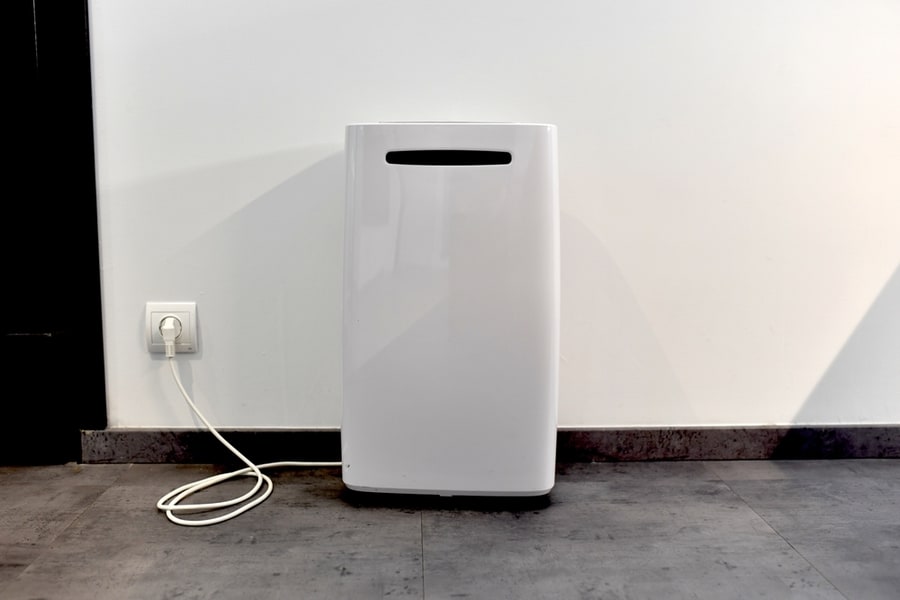
Taking care of your home’s humidity is a great way to protect it from roaches.
By keeping your home’s humidity below 70%, you can effectively curtail the risks of roach infestation. Thus investing in dehumidifiers is the key.
Be sure to place the dehumidifier where it can be the most effective, such as in rooms with high moisture levels, including laundry and bathrooms.
This will not only keep roaches out but will also improve air quality, provide fewer odors, and provide a more comfortable atmosphere for everyone in the house.
Conclusion
To sum it up, not all roaches can fly; it’s determined by various factors explained above.
Science has revealed fascinating insights into why some can take flights while others cannot. Thus the ability to fly is more of a nuisance than a threat.
Besides these flying roaches being unsettling for many, they could also be the reason for severe health conditions. Thus preventive measures can help keep your home free from these unwanted intruders.
Various approaches can be fruitful in banning these flying insect’s entries into your home.
Still, the most effective include cleaning your home, sealing their entry points, keeping food properly stored, and ensuring there are no rinsing water sources.
These measures will ensure your home roaches free, giving you one less thing to worry about.
Frequently Asked Questions
What Causes Roaches To Fly?
Roaches can fly when they are adults and have fully developed wings. They may fly to escape danger, find food, or locate a mate.
Can Flying Roaches Bite?
Most species of roaches do not bite humans. However, some species can bite if threatened or provoked.
Are Flying Roaches Dangerous?
Roaches are not usually considered dangerous, but they can be a nuisance and cause allergic reactions in some individuals.
They can also cause diseases by contaminating food and by their feces.

